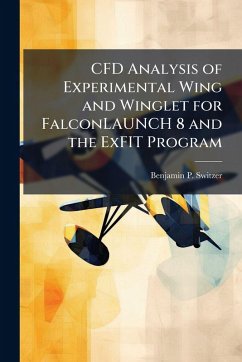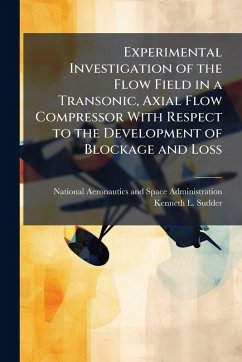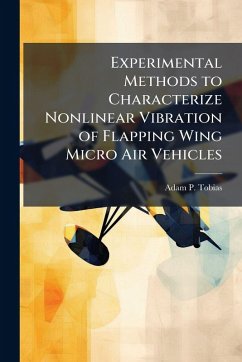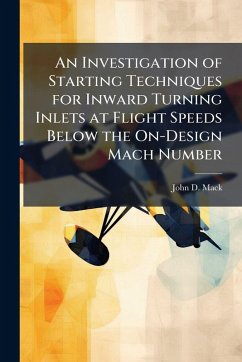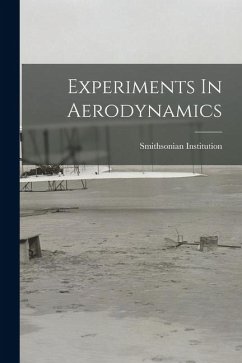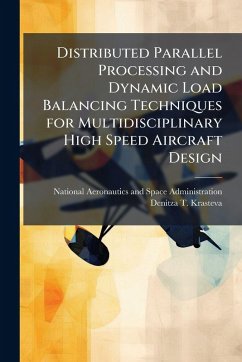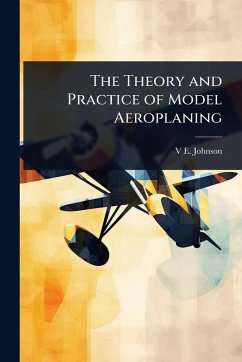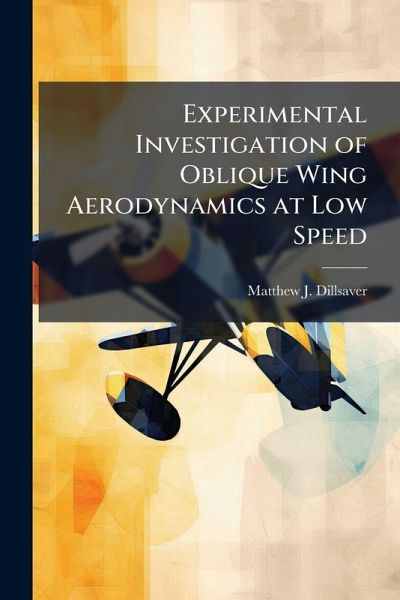
Experimental Investigation of Oblique Wing Aerodynamics at Low Speed
Versandkostenfrei!
Versandfertig in über 4 Wochen
17,99 €
inkl. MwSt.
Weitere Ausgaben:

PAYBACK Punkte
9 °P sammeln!
In an effort to increase the range of missiles and guided bombs, the USAF is looking at options for new wing configurations. One such configuration being considered is oblique wings. An oblique wing is a wing that pivots about a point on the aircraft fuselage thereby having one side swept forward and the other swept aft. Additional interest is looking at a wing only configuration that also rotates with one wing tip forward of the other. Studies have shown that this configuration can provide less drag for a given lift at both supersonic cruise and subsonic loiter conditions. This experiment foc...
In an effort to increase the range of missiles and guided bombs, the USAF is looking at options for new wing configurations. One such configuration being considered is oblique wings. An oblique wing is a wing that pivots about a point on the aircraft fuselage thereby having one side swept forward and the other swept aft. Additional interest is looking at a wing only configuration that also rotates with one wing tip forward of the other. Studies have shown that this configuration can provide less drag for a given lift at both supersonic cruise and subsonic loiter conditions. This experiment focused on the low speed performance of a missile model with an oblique wing. The wing was tested at seven different sweep angles and at two different speeds. In order to simulate the missile dropping from an aircraft the model was inverted over a stationary ground plane in the tunnel and tested at the same wing obliquity angles. Stalling was found at certain conditions including sweep angles of 0, 15, and 30 deg. The ground plane was shown to result in an increase in lift as well as an increase in drag. The ground plane was also shown to add more longitudinal stability, thus making the missile better performing when dropped from an aircraft. This work has been selected by scholars as being culturally important, and is part of the knowledge base of civilization as we know it. This work was reproduced from the original artifact, and remains as true to the original work as possible. Therefore, you will see the original copyright references, library stamps (as most of these works have been housed in our most important libraries around the world), and other notations in the work. This work is in the public domain in the United States of America, and possibly other nations. Within the United States, you may freely copy and distribute this work, as no entity (individual or corporate) has a copyright on the body of the work. As a reproduction of a historical artifact, this work may contain missing or blurred pages, poor pictures, errant marks, etc. Scholars believe, and we concur, that this work is important enough to be preserved, reproduced, and made generally available to the public. We appreciate your support of the preservation process, and thank you for being an important part of keeping this knowledge alive and relevant.



